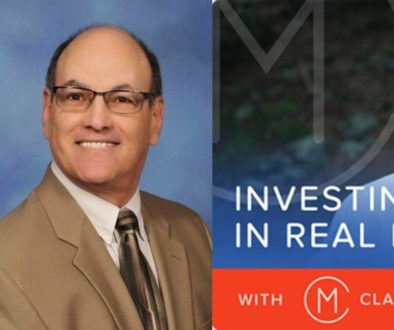Seller Financing Rules (NAR)
Impact of Loan Originator Final Rule on Seller Financing
(February 8, 2013)
The new final rule establishing Loan Originator Compensation Requirements1 applies broadly to loan originators, including seller financers that do not qualify for an exclusion from the definition. The Consumer Financial Protection Bureau (CFPB) released the rule on January 20, 2013, as part of its implementation of amendments to the Truth in Lending Act (TILA) made by the Dodd-Frank Wall Street Reform and Consumer Protection Act enacted on July 21, 2010. The rule takes effect on January 10, 2014, except for two provisions related to loan originator qualifications that take effect on June 1, 2013.
The definition of loan originator is broad. It covers anyone who, for compensation, performs any activities related to the origination of mortgage loans, including (but not limited to): taking an application or offering, arranging, or assisting a consumer in obtaining or applying for credit.
TILA, as amended, and CFPB’s implementing regulations exclude from the definition of loan originator some sellers who provide seller financing. Because the requirements are extremely complex, unless seller financers qualify for exclusion, they will as a practical matter have to use another approach for financing the sale of the property, including engaging a licensed loan originator without performing loan origination activities themselves. This is similar to the situation under the SAFE Act’s loan originator licensing requirements where, unless you are exempt from licensing under the state law enacted to implement the SAFE Act, it is not usually practicable to provide seller financing directly.
In response to NAR and many other commenters, CFPB has provided some flexibility in the new final rule by excluding from the definition of loan originator two categories of seller financing: those that sell 3 or fewer properties in any 12-month period and those that sell only one in any 12-month period, and in both cases meet other criteria. If you sell one property using the less restrictive exclusion rules and then seek to sell a second property, the safest course would be to wait for the expiration of 12 months after consummation of the first sale before selling the second property. Though the CFPB made minor changes to the statute, such as the one property exclusion noted above and not requiring proof of documentation of a borrower’s ability to repay, the Bureau determined to not eliminate the criteria in the seller financing exclusion as defined in the Dodd-Frank Act.
Seller Financers—3-Property Exclusion
This exclusion applies to “persons” as defined broadly under TILA to include not only “natural” persons but also a wide range of organizations such as corporations, partnerships, proprietorships, estates, and trusts. To be excluded from the definition of loan originator using the 3-property exclusion, you must meet all of the following criteria:
- The person provides financing for the sale of 3 or fewer properties in any 12-month period. Each property must be owned by the seller and serve as security for the financing.
- The person has not constructed, or acted as construction contractor for, a residence on the property in the ordinary course of business of the person.
- The person provides seller financing that meets the following requirements:
1 See 12 CFR section 1026.36.
- A) The financing is fully amortizing (no balloon mortgages or negative amortization).
- B) The person determines in good faith that the consumer (buyer) has a reasonable ability to repay. The regulation does not require documentation of the determination, which significantly eases the regulatory burden, though CFPB points out it may be a good idea in the case questions arise whether the seller made the determination. CFPB’s Official Interpretations of the regulation provide guidance on how a seller could make the determination that the buyer has a reasonable ability to repay. This could include considering earnings as evidenced by payroll or earning statements, W-2s, etc.; other income from a federal, state, or local agency providing benefits and entitlements; and/or income earned from assets (such as financial assets or rental property). The value of the dwelling may not be considered as evidence of the buyer’s ability to repay. The seller may rely on copies of tax returns.
- C) The financing has a fixed interest rate or an adjustable interest rate that is adjustable after 5 or more years. If it has an adjustable rate, it must have reasonable annual and lifetime limits on rate increases and provide for the rate to be determined by the addition of a margin to an index rate based on a widely available index such as indices for U.S. Treasury securities or LIBOR. CFPB’s Official Interpretations note that an annual rate increase of up to 2 percentage points is reasonable. A lifetime cap of 6 percentage points, subject to a minimum floor and maximum ceiling up to any applicable usury limit, is reasonable. These “safe harbors” are not mandatory, but sellers would be wise to adopt them.
Note: If you are considered a creditor under TILA because you make 2 or 3 high cost loans under the Homeownership and Equity Protection Act (HOEPA), you are considered to be a loan originator for purposes of the loan originator qualification requirements in 12 CFR section 1026.36(f) and (g) and any other rules applicable to creditors under TILA. This is true even if you are exempt from the definition of loan originator under the 3-property exclusion. Check with an expert to make sure you avoid providing seller financing subject to HOEPA, which imposes many more limits and requirements.
Seller Financing—1-Property Exclusion
This more flexible exception applies only to a more narrow definition of “persons” (only natural persons, estates, and trusts) that sell only 1 property in a 12-month period. The exclusion is not available to other organizations, such as corporations, partnerships, or proprietorships. To be exempt from the definition of loan originator using the 1-property exclusion, you must meet the following criteria:
- The person provides financing for the sale of only one property in any 12-month period. The property must be owned by the seller and serve as security for the financing.
- The person has not constructed, or acted as construction contractor for, a residence on the property in the ordinary course of business of the person. (This is the same requirement as applies for the 3- property exclusion.)
- The person provides seller financing that meets the following requirements:
- The financing has a repayment schedule that does not result in negative amortization. A balloon mortgage is permitted. (NAR sought relief from the prohibition against balloon mortgages.)
- The financing has a fixed interest rate or an adjustable interest rate. If it has an adjustable rate, it must have reasonable annual and lifetime limits on rate increases and provide for the rate to be determined by the addition of a margin to an index rate based on a widely available index such as indices for US. Treasury securities or LIBOR. CFPB’s Official Interpretations note that an annual rate increase of up to 2 percentage points is reasonable. A lifetime cap of 6 percentage points, subject to a minimum floor and maximum ceiling up to any applicable usury limit, is reasonable. (This is the same requirement as applies for the 3-property exclusion.)
Other Requirements Apply Even if You Are Not a Loan Originator
Even if you are excluded from the definition of loan originator, you are only exempt from the loan originator requirements of the regulation. An exempt person would still be subject to the rule prohibiting anyone from paying a loan originator compensation based on the terms of the transaction (e.g., higher payments for loans with higher interest rates). This would occur if a seller financer engages a loan originator to assist with setting up the financing for the seller financing. In addition, the limits on mandatory arbitration would also apply. The contract or other agreement for any credit transaction, including any seller financing, may not require arbitration or other non-judicial procedures to resolve disputes. After a dispute arises, however, the parties may agree to use arbitration or other non-judicial procedure.
Exclusion of Real Estate Activities from Loan Originator Compensation Rule
The new final rule establishing Loan Originator Compensation Requirements2 applies broadly to loan originators, excluding licensed persons engaged solely in real estate brokerage activities. The Consumer Financial Protection Bureau (CFPB) released the rule on January 20, 2013, as part of its implementation of amendments to the Truth in Lending Act (TILA) made by the Dodd-Frank Wall Street Reform and Consumer Protection Act enacted on July 21, 2010. The rule takes effect on January 10, 2014
The definition of loan originator is broad and imposes many requirements on anyone covered by the rule. The definition includes anyone who, for compensation, performs any activities related to the origination of mortgage loans, including: taking an application; assisting a consumer in obtaining or applying to obtain a loan; offering or negotiating terms of a loan; or advertising any of these services. The real estate activities exclusion applies to licensed persons performing only real estate brokerage activities, unless compensated by a creditor or loan originator for a particular consumer credit transaction covered by the rule. Providing clients with uncompensated general information about mortgages or lists of reputable lenders does not appear to bring a broker/agent under the definition of loan originator.
The CFPB has provided guidance clarifying that compensation paid by a creditor or loan originator to a real
estate broker/agent does not transform a real estate brokerage activity into a loan originator activity.
The CFPB explains:
- A person paid solely for real estate brokerage activities by a loan originator or creditor is not covered by the definition of loan originator.
- When a real estate broker/agent sells a property owned by a creditor (such as an REO), the commission does not turn the real estate brokerage activity into a loan originator activity.
But care is needed. CFPB also notes:
- Even if State law provides that loan origination activities are eligible real estate brokerage activities, the real estate broker/agent is nevertheless considered to be a loan originator under the final rule if engaged in loan originator activities as defined under the final rule.
- A broker/agent is a loan originator when paid for performing creditor, mortgage broker, or consumer credit referral activities.
- If a broker affiliated with a creditor pays an agent for origination activities, such as for taking the consumer’s credit application and performing other functions related to origination of the loan, the agent is a loan originator.




